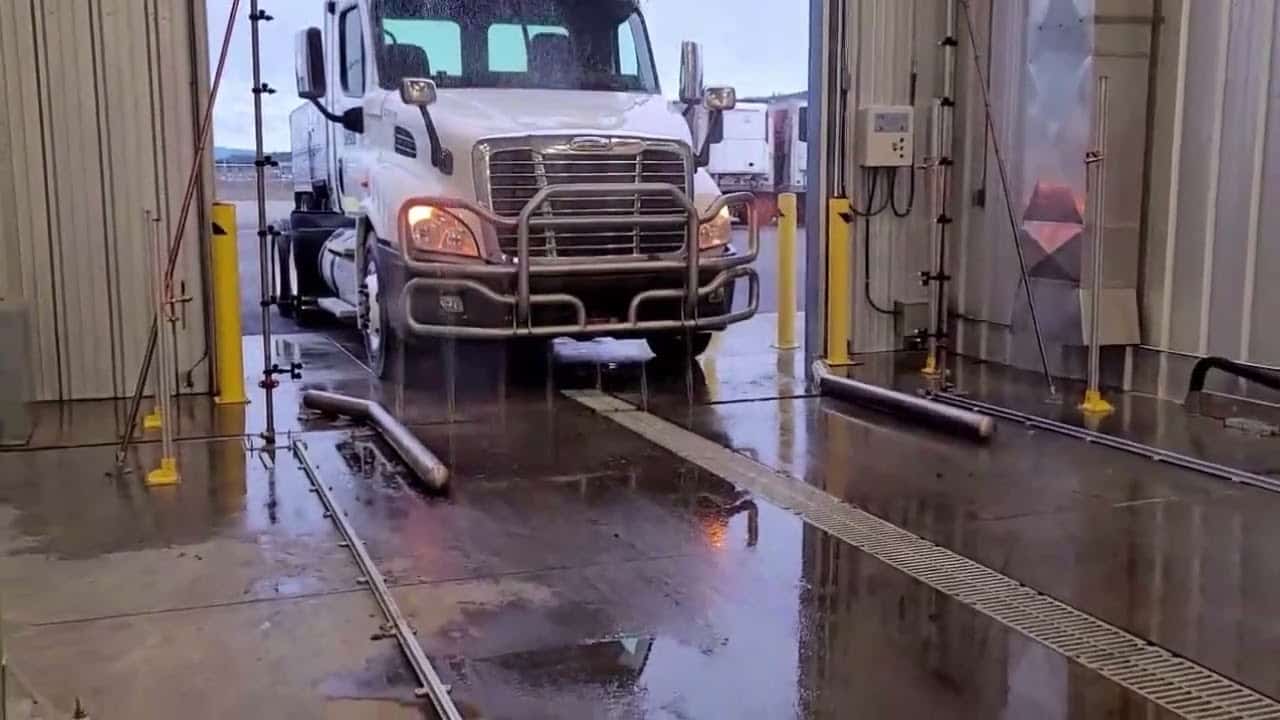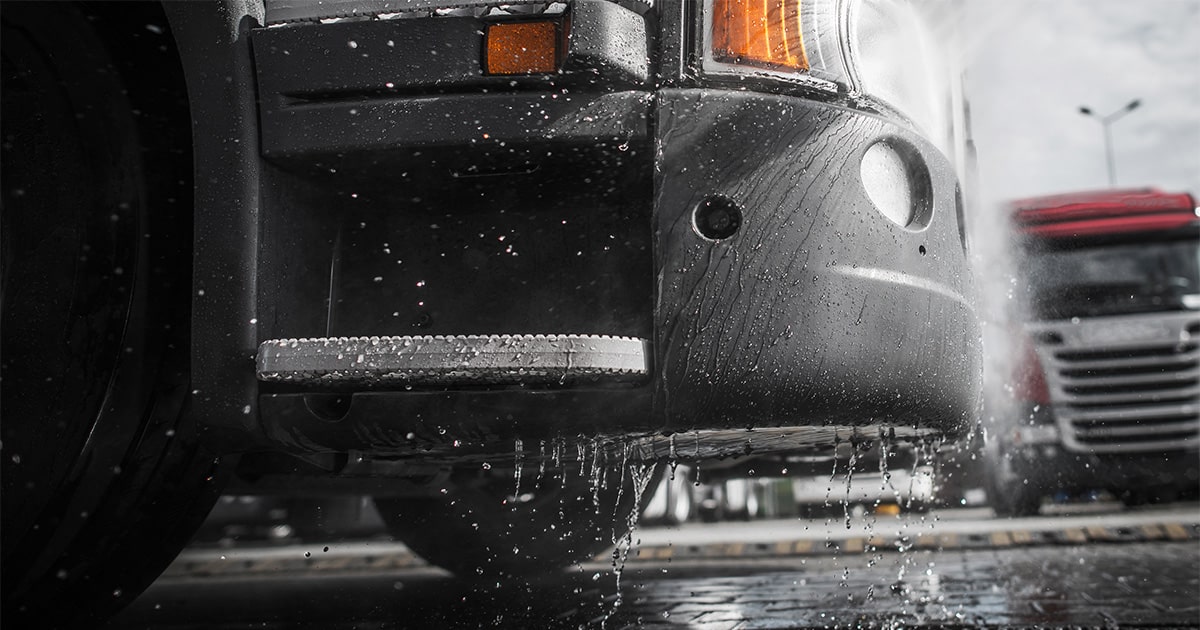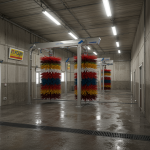Are you tired of spending countless hours and resources trying to keep your fleet vehicles clean? Look no further! In this ultimate guide, we will show you how to boost your fleet wash efficiency with the power of automation and speed, ensuring consistent and remarkable results every time.
With our expert tips and strategies, you’ll learn how to streamline your fleet wash process, save time and money, and achieve a spotless finish that leaves a lasting impression. We’ll delve into the latest technologies and innovations in automated fleet washing, giving you the tools to transform your operation and stand out from the competition.
Say goodbye to manual labor and hello to improved productivity with intelligent automation solutions! Whether you have a small fleet or a large operation, our guide is tailored to your needs, providing actionable advice that will make a real difference. Discover the secrets to efficiency and remarkable results in fleet washing today!
Don’t let dirty vehicles hold your fleet back. Read on and unleash the power of automation and speed for a truly transformative fleet wash experience. Get ready to take your business to the next level!
The Importance of Fleet Wash Efficiency
Maintaining a clean and presentable fleet is crucial for any business that relies on vehicles for their operations. A dirty fleet not only reflects poorly on your brand image but can also lead to various challenges and drawbacks. It is essential to prioritize fleet wash efficiency to ensure that your vehicles always look their best and reflect the professionalism of your business.
Efficiency in fleet washing goes beyond simply making your vehicles appear clean. It is about streamlining the entire wash process, minimizing downtime, reducing costs, and maximizing productivity. By optimizing your fleet wash operations, you can enhance customer satisfaction, improve employee morale, and ultimately boost your bottom line.
Challenges in Fleet Wash Operations
Fleet wash operations come with their fair share of challenges. Traditional manual washing methods are time-consuming, labor-intensive, and often lead to inconsistent results. With a large fleet, it becomes increasingly difficult to maintain a high level of cleanliness across all vehicles consistently. Additionally, manual labor can result in higher costs, as it requires a significant investment of time and resources.
Furthermore, external factors such as weather conditions and environmental pollutants can make fleet washing even more challenging. Rain, snow, and road debris can quickly undo the hard work put into cleaning your vehicles manually. These challenges highlight the need for a more efficient and effective fleet wash solution that can overcome these obstacles and deliver consistent results.

The Benefits of Automation in Fleet Wash
Automation is revolutionizing the fleet wash industry, offering numerous benefits that traditional manual methods simply cannot match. By incorporating automated systems into your fleet wash process, you can achieve significant improvements in efficiency, consistency, and overall effectiveness.
One of the key advantages of automation is the ability to reduce wash cycle times. Automated systems are designed to perform the necessary cleaning tasks quickly and efficiently, significantly reducing the time required to wash each vehicle. This increased speed allows for more vehicles to be cleaned in a shorter amount of time, increasing overall productivity and throughput.
In addition to speed, automation also ensures consistency in the wash process. Machines follow programmed instructions precisely, eliminating human error and variations in cleaning techniques. This consistency translates into a uniform and high-quality finish across all vehicles, enhancing your brand’s professionalism and reputation.
How Automation Improves Speed and Consistency
Automation in fleet washing offers several features and functionalities that contribute to improved speed and consistency. Let’s explore some of the key ways automation enhances the efficiency of your fleet wash operations.
- Pre-Programmed Wash Cycles: Automated fleet wash systems come with pre-programmed wash cycles that are specifically designed for different types of vehicles and cleaning requirements. These cycles include various stages such as pre-soaking, scrubbing, rinsing, and drying, all performed with optimal timing and efficiency. By following these predefined cycles, automation ensures that each vehicle receives a thorough and consistent cleaning process.
- High-Pressure Water Systems: Automated fleet wash systems utilize high-pressure water systems to effectively remove dirt, grime, and other contaminants from the vehicle’s surface. The forceful water jets, combined with specialized cleaning agents, enable efficient cleaning without the need for excessive scrubbing. This not only saves time but also minimizes the risk of damaging the vehicle’s paint or bodywork.
- Precision Sensors and Brushes: Automation systems are equipped with precision sensors and brushes that adapt to the contours of each vehicle, ensuring thorough and precise cleaning. These sensors detect the size and shape of the vehicle, allowing the brushes to adjust their pressure and movement accordingly. This feature guarantees consistent cleaning results across different vehicle types, whether it’s a compact car or a large truck.
- Drying Systems: Automated fleet wash systems often include integrated drying systems that use powerful air blowers to remove excess water from the vehicle’s surface. This eliminates the need for manual drying, further reducing the overall wash time. The drying systems ensure that the vehicles leave the wash bay with a spotless finish, ready to hit the road in no time.
By harnessing these features and functionalities, automation improves both the speed and consistency of your fleet wash operations. With reduced cycle times and consistent cleaning results, you can achieve remarkable efficiency and productivity gains.

Choosing the Right Automated Fleet Wash System
Selecting the right automated fleet wash system is crucial to maximize efficiency and achieve remarkable results. With various options available in the market, it’s important to consider several factors when making your decision.
- Wash System Capacity: Assess your fleet’s size and requirements to determine the optimal wash system capacity. Consider the number of vehicles you need to wash per hour or day, and choose a system that can handle your fleet’s volume without causing bottlenecks or delays.
- Customization Options: Look for an automated wash system that offers customization options to cater to your specific needs. The ability to adjust wash cycles, water pressure, detergent concentration, and other parameters can help tailor the cleaning process to your fleet’s requirements.
- Ease of Use and Maintenance: Opt for a system that is user-friendly and easy to maintain. Look for features such as intuitive interfaces, remote monitoring capabilities, and automated maintenance alerts to simplify operation and maintenance tasks.
- Compatibility with Vehicle Types: Ensure that the automated wash system you choose is compatible with different types of vehicles in your fleet. Whether you have cars, trucks, vans, or buses, the system should be able to accommodate various sizes and configurations.
- Durability and Reliability: Invest in a high-quality automated wash system that is built to last. Look for systems with robust construction, reliable components, and good after-sales support to minimize downtime and maximize system longevity.
Key Features to Consider in an Automated Fleet Wash System
When evaluating automated fleet wash systems, keep an eye out for key features that can significantly enhance efficiency and effectiveness. Here are some essential features to consider:
- Multiple Wash Programs: Look for a system that offers multiple wash programs tailored to different vehicle types, levels of dirtiness, and customer preferences. This flexibility allows you to provide customized cleaning options while maintaining efficiency and consistency.
- Water Recycling and Conservation: Opt for a system that incorporates water recycling and conservation features. These systems filter and treat the used water, allowing it to be reused in subsequent wash cycles. This not only reduces water consumption but also minimizes environmental impact.
- Remote Monitoring and Control: Consider a system that enables remote monitoring and control of your fleet wash operation. Remote access allows you to track performance, make adjustments, and receive real-time notifications, ensuring optimal efficiency and minimizing downtime.
- Integrated Chemical Management: Look for a system that includes integrated chemical management capabilities. This feature ensures accurate and efficient dispensing of cleaning agents, eliminating the need for manual measuring and reducing wastage.
- Data Analytics and Reporting: Select a system that provides data analytics and reporting functionalities. These features allow you to track key performance metrics, identify trends, and make data-driven decisions to further optimize your fleet wash operations.
By considering these key features, you can choose an automated fleet wash system that best aligns with your business needs and goals. The right system will unlock the full potential of automation, enabling you to achieve exceptional efficiency and remarkable results.
Tips for Maximizing Efficiency with Automation
Implementing automation in your fleet wash operations is a significant step towards improving efficiency. However, there are additional tips and strategies you can employ to maximize the benefits of automation and achieve even greater efficiency gains.
- Optimize Workflow: Analyze and optimize your workflow to ensure a seamless and efficient wash process. Consider factors such as vehicle flow, entry and exit points, and queuing systems to minimize congestion and maximize throughput.
- Train Your Staff: Properly train your staff on the operation and maintenance of the automated wash system. Ensure they understand the system’s functionalities, safety protocols, and troubleshooting procedures. Well-trained staff can operate the system effectively, reducing the risk of errors and downtime.
- Establish Preventive Maintenance Procedures: Implement preventive maintenance procedures to keep your automated wash system in optimal condition. Regularly inspect and clean the system, replace worn-out components, and follow the manufacturer’s recommended maintenance schedule. This proactive approach can help prevent breakdowns and extend the system’s lifespan.
- Monitor Performance Metrics: Utilize the data analytics and reporting capabilities of your automated wash system to monitor key performance metrics. Track metrics such as wash cycle times, water consumption, chemical usage, and equipment uptime. Analyzing this data can highlight areas for improvement and guide decision-making to further enhance efficiency.
- Continuously Improve and Innovate: Embrace a culture of continuous improvement and innovation within your fleet wash operation. Stay abreast of the latest industry trends, technologies, and best practices. Regularly evaluate your processes, test new strategies, and implement changes that can drive efficiency gains and deliver remarkable results.
By combining automation with these tips and strategies, you can unlock the full potential of your fleet wash operation, achieve exceptional efficiency, and stay ahead of the competition.
Case Studies of Businesses that have Improved Fleet Wash Efficiency through Automation
To illustrate the transformative power of automation in fleet wash operations, let’s explore a couple of real-world case studies showcasing businesses that have achieved significant improvements in efficiency and remarkable results.
Case Study 1: XYZ Logistics
XYZ Logistics, a transportation company with a large fleet of trucks, was facing challenges in maintaining a clean and presentable fleet. Manual washing methods were time-consuming and resulted in inconsistent cleaning outcomes. XYZ Logistics decided to invest in an automated fleet wash system to address these issues and improve efficiency.
By implementing an automated system, XYZ Logistics was able to significantly reduce wash cycle times. The pre-programmed wash cycles, along with high-pressure water systems and precision sensors, ensured consistent and thorough cleaning across all their trucks. The integrated drying system further expedited the wash process, allowing more trucks to be cleaned in less time.
The automation solution also provided XYZ Logistics with remote monitoring and control capabilities. This enabled them to track performance, make adjustments, and receive real-time notifications, ensuring optimal efficiency and minimizing downtime. The system’s data analytics and reporting functionalities allowed XYZ Logistics to analyze key metrics, identify areas for improvement, and make data-driven decisions.
As a result, XYZ Logistics experienced remarkable efficiency gains. The faster wash cycles allowed them to clean a higher number of trucks per day, reducing downtime and increasing overall productivity. The consistent cleaning results improved their brand image and customer satisfaction. The automation solution proved to be a game-changer for XYZ Logistics, delivering exceptional efficiency and remarkable results.
Case Study 2: ABC Bus Company
ABC Bus Company, a provider of transportation services, was struggling to keep their fleet of buses clean. Manual washing methods were labor-intensive and time-consuming, impacting their operational efficiency. To overcome these challenges, ABC Bus Company decided to invest in an automated fleet wash system.
The automated system provided ABC Bus Company with multiple wash programs tailored specifically for buses. This customization allowed them to cater to different levels of dirtiness and customer preferences efficiently. The high-pressure water systems and precision brushes ensured a thorough and consistent cleaning process for each bus, regardless of size or configuration.
The integrated chemical management feature eliminated the need for manual measuring and dispensing of cleaning agents, streamlining the wash process further. The system’s remote monitoring and control capabilities allowed ABC Bus Company to monitor performance, make adjustments, and receive real-time notifications, ensuring optimal efficiency and minimizing downtime.
By implementing automation, ABC Bus Company achieved remarkable efficiency gains. The reduced wash cycle times enabled them to clean more buses in a shorter amount of time, resulting in increased productivity. The consistent cleaning results improved their brand image and customer satisfaction. The automation solution propelled ABC Bus Company towards exceptional efficiency and remarkable results in their fleet wash operations.
Training and Maintenance for Automated Fleet Wash Systems
Proper training and maintenance are essential for the effective operation and longevity of your automated fleet wash system. By following best practices in training and maintenance, you can ensure optimal performance and maximize the return on your investment.
Training: Start by providing comprehensive training to your staff on the operation, maintenance, and safety protocols of the automated wash system. This training should cover topics such as system functionalities, user interfaces, startup and shutdown procedures, emergency stops, and troubleshooting techniques. By equipping your staff with the necessary knowledge and skills, you can minimize errors, reduce downtime, and ensure a smooth operation.
Maintenance: Regular and proactive maintenance is crucial to keep your automated wash system running at its best. Follow the manufacturer’s recommended maintenance schedule and guidelines. This includes inspecting and cleaning the system regularly, replacing worn-out components, and performing system calibrations as required. Implement preventive maintenance procedures to identify and address potential issues before they escalate, minimizing the risk of breakdowns and costly repairs.
It is also important to keep spare parts readily available to minimize downtime in case of component failures. Establish a relationship with the system’s manufacturer or authorized service providers for technical support and assistance when needed.
Regularly monitor and record key performance metrics such as water consumption, chemical usage, and equipment uptime. Analyze this data to identify any deviations or trends that may indicate maintenance needs or optimization opportunities.
By prioritizing training and maintenance, you can ensure that your automated fleet wash system operates at peak performance, delivering exceptional efficiency and remarkable results consistently.




